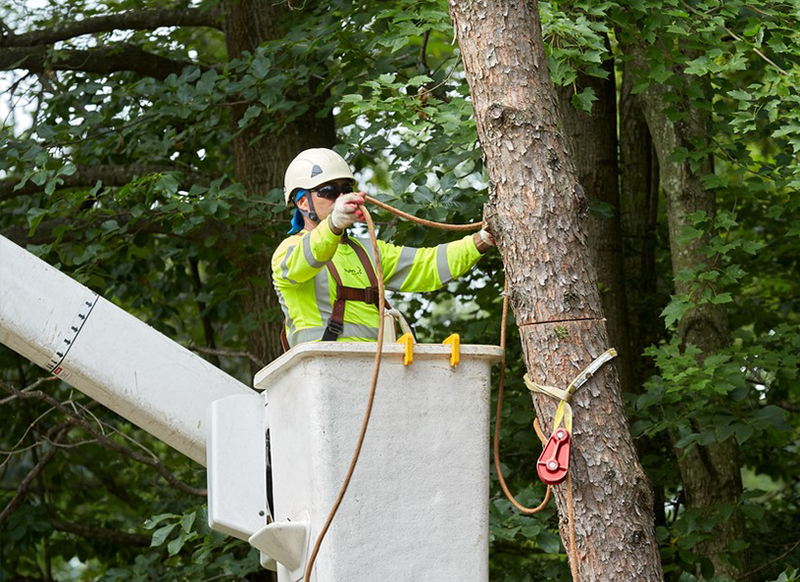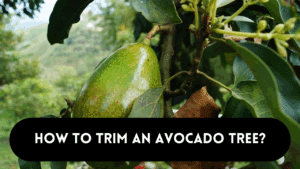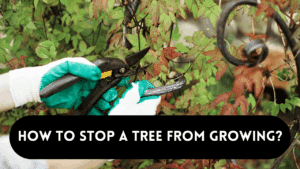Banana trees are known for their lush foliage and delicious fruit, but there are times when it becomes necessary to remove or kill them.The removal of a banana tree should be done with caution and responsibility. Banana trees, which are essentially huge herbs, can be valuable for their fruit production, so killing one should be done for good reasons, such as disease management, pest control, or other specific requirements. In this introduction, I will detail some of the most frequent methods to remove banana trees.
It is critical to select an acceptable strategy based on your unique circumstances and goals.The shallow yet extensive rhizomes and spreading shoots may cause crowding and competition. Prevention necessitates the full removal of these root parts and their buds.
Why Removing Banana Trees Are Important?
1. Disease Prevention:
Banana plants are vulnerable to a variety of diseases, including Panama disease and black Sigatoka. It is critical to get rid of those affected to prevent spreading diseases to healthy banana trees.
2. Pest Control:
Banana plants are susceptible to pests such as nematodes and weevils. Removing infested trees aids in pest population management and protects surrounding plants.
3. Crop Rotation and Soil Health:
Removing banana plants from a specific area on a regular basis can help to minimize soil depletion and maintain soil health. This is necessary for crop rotation and long-term agricultural output.
4. Utilization of Space:
Banana trees can take up a lot of space in gardens or plantations. Removing certain trees can provide room for other crops, increasing agricultural diversity and output.
5. Increased Yield:
Banana plants that are older may yield smaller and fewer fruit bunches. Removing these older plants allows for the growth of younger, more productive plants, resulting in increased fruit yield and quality.
6. Avoiding Overcrowding:
Banana trees frequently develop suckers or offshoots, which can result in overcrowding. Excess suckers are removed to maintain maximum plant density.
7. Development of Land:
Banana trees may need to be removed in urban or suburban areas to make way for building or landscape alterations.
8. Aesthetic Considerations:
Banana trees may be removed from home gardens or public locations for aesthetic reasons, allowing for a more structured or visually appealing setting.
9. Disease Reservoir Management:
Removing banana trees that act as reservoirs for specific pests or diseases can help break the pathogen’s life cycle and safeguard neighboring crops.
10. Resolving Safety Issues:
If dead or decaying banana trees fall over, they might be dangerous. By removing them, the danger of an accident is reduced.
It’s crucial to highlight that removing a banana tree should be based on a thorough grasp of your individual aims and challenges. Careful examination of these considerations will assist in determining whether removal is the best course of action
Manual Methods to Remove Banana Trees
Manual removal of a banana tree involves physically cutting down the tree and removing its roots by hand without the use of machinery or chemicals. Here’s a step-by-step guide on how to manually remove a banana tree:
Tools required
- Gloves
- Pruning shears or saw
- Shovel
- Mattock or pickaxe(its optional
- Wheel barrow or tarp
Steps
- Wear gardening gloves and safety eye wears,banana trees have sharp leaves that can cut the skin
- Use pruning shears or saw and cut as many as leaves of banana tree. This reduces the weight and size and make the tree easy to remove
- Start digging a trench on the base of banana tree using shovel, dig deeply to expose the roots because banana tree have fibrous root system so you’ll need to dig deep and wide
- Use your pruning shears or saw to cut through the roots as you encounter them.
- Cut through the roots when you come across them with your pruning shears or saw. If the roots are very thick or obstinate, you may need to split them and remove them by using a mattock or pickaxe.
- Try to slightly bend the tree as you cut through the roots. This will allow you to reach and cut more roots. Once you’ve severed enough roots to move the tree, use a combination of digging and leveraging to remove the tree stump out of the ground.
- Place the removed tree, roots, and debris in a wheelbarrow or on a tarp to be disposed of.
- You’ll be left with a hole in the ground after the tree is gone. Fill up this hole with soil and pack it down to level it with the surrounding area.
- Properly dispose of the debris and clean your tools.
Chemical Removal Using kerosene
Using chemicals to destroy a banana tree, such as kerosene, is not a suggested or environmentally acceptable practice. Kerosene is a highly combustible and poisonous chemical that can harm the environment and soil quality. It can also endanger human and animal health.
Instead of utilizing hazardous chemicals like kerosene, explore alternative means of removing banana plants, such as manual removal or the use of herbicides formulated exclusively for tree clearance. These methods are more secure and environmentally beneficial.
- Fill a cup halfway with water and pour it into the growing point of the banana plant.
- Smaller plants, such as suckers, require less water, such as 100 ml for plants up to one meter tall and 50 ml for suckers.
- Kerosene enters the plant’s tissues.
- It annihilates the plant in five to seven days.
- Once the plant has perished, dig out the rhizome (root) and split it apart.
- This is the only way to stop plantlets from regenerating.
Using Herbicide To Remove Banana Tree
The existence of rhizomes is one of the most difficult parts of working with banana trees. Underground, these thick, fleshy roots can expand quickly and send up new shoots, making full removal of the tree difficult. This is why simply cutting down the tree isn’t enough. This is proven ineffective because the subsurface rhizomes will continue to grow.
The most effective technique to deal with this is to use a glyphosate-containing herbicide. This has been accepted method for annihilating banana trees and other hardy, fast-growing plants. Glyphosate will kill the tree and its roots, preventing it from growing back.
- Use herbicides if you don’t want the trouble of digging out the banana roots and want the simplest way with the least difficulties.
- Large banana trees afflicted with pests or illnesses must be cut down.
- To kill the plant, a herbicide can be injected directly into its trunk.
- The best herbicides for this job are glyphosate and 2,4-D or 2,4-Dichlorophenoxyacetic acid.
- Most injected plants die within six weeks, at which point they should be physically removed and terminated to prevent disease spread.
FAQS
Is there a specific season to kill banana trees?
You can remove banana trees at any time of the year, but it’s often easier to work on them during the growing season when they have leaves.
What’s the safest way to kill a banana tree?
The safest method is manual removal, which involves digging around the tree, cutting the roots, and taking it out by hand. This avoids the use of chemicals.
Is it safe to use kerosene or other chemicals to kill a banana tree?
No, using chemicals like kerosene is not safe or environmentally responsible and is strongly discouraged.
How long does it take for a banana tree to die after treatment with herbicides?
The time it takes for a banana tree to die after herbicide treatment varies but can take several weeks to a few months.
Can I replant another banana tree in the same spot after removal?
Yes, you can replant another banana tree or a different crop in the same spot once the old roots have decayed or been removed.
Conclusion
Destroying a banana tree should be addressed wisely and ethically, taking into account the reasons for removal as well as the potential environmental consequences. Manual removal or the use of herbicides suited for woody plants can be beneficial, but caution and correct disposal are required. It is essential to monitor any regrowth and take preventative measures. Always observe local restrictions and put the environment and surrounding vegetation first.




